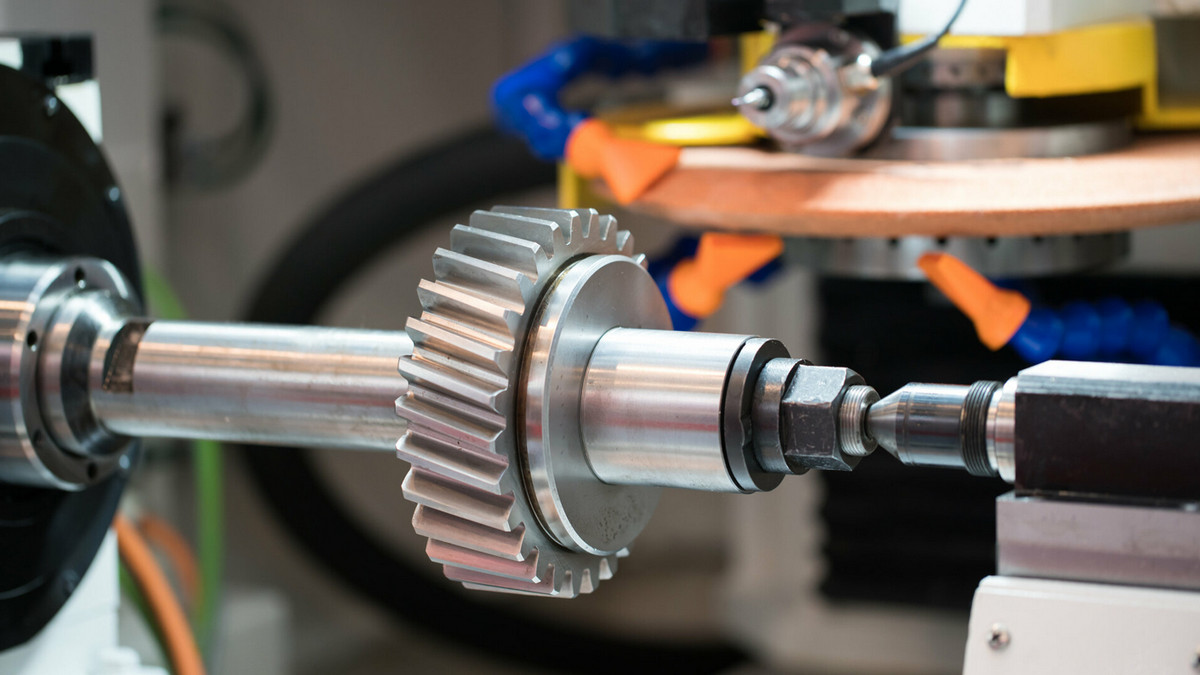Broaching is a machining process that uses a toothed machining tool, called a broach, to cut material from a workpiece. The broach has a series of cutting tips arrayed in sequence on one tool. The cutting tips become progressively larger across the span of the tool. Across the span of the broach, the cutting tips will progress from rough cutter tips to fine cutter tips. The broach is inserted into a machine called a broaching machine, which drives the broach.
What are Broach Applications?
The broach is a high-precision multi-tooth tool that is capable of high-productivity. It can be used to cut various shapes on the inner surfaces of workpieces, such as round holes, polygonal holes, various spline holes, etc. It can cut complex shapes on the outer surfaces of objects, such as grooves at the root of gas turbine blades, external gears, semi-circular holes in connecting rods, etc. A broach that cuts the inner surface is called an inner broach, and a broach that cuts the outer surface is simply called a broach. Most broaches work with a pulling force, whereas those that use forward pressure are called push knives. Due to limits of stability under compression, push knives are generally shorter than broaches.
There are various forms of movement which can be used during broaching including linear or circular motion of the broach, linear or circular motion of the workpiece, or a combination of both at the same time. In most cases the workpiece is fixed, and the broach makes a linear cutting motion across the workpiece. The feed movement of the broach is determined by the increasing size of the tool teeth along the length of the broach. The difference in the height or radius of two adjacent teeth is called the tooth lift, and corresponds to the cutting thickness. The tooth lift of broach is usually very small, generally only a few hundredths of a mm.
The broach is specially designed to be more economical for use in mass production. Where the shape and size of the machined surface has been standardized, the broach can be serialized and produced in batches. Broaching tools used for broaching standard round and splined holes are generally standardized.
Broaching Features
Broaching is a fast and precise process. Broaching is very adaptable for use in making round holes, splines, keyways, six-bolt slots, square holes, hexagonal holes, special-shaped holes, spiral internal teeth, etc. Broaching can be used to quickly and precisely cut complex shapes, and can be customized according to different processing requirements.
Using a broach, the completed shape can be formed in one working stroke, making it a highly-efficient finishing method. However, due to the complex structure of the broach and the requirement for tool specialization, the manufacturing cost is high, so broaching is mainly used for mass production.
- Internal broaching is used to process holes with various cross-sectional shapes, such as round holes, square holes, polygon holes, spline holes, keyway holes, internal gears, etc. Before broaching, there must be a machined hole through which the broach can be inserted. The hole diameter of broaching generally ranges from 8 to 125 mm, and the hole depth cannot exceed 5 times the hole diameter. Under special circumstances, the aperture range can be as small as 3 mm or as large as 400 mm, and the hole depth can be up to 10 meters.
- External broaching is used to process non-closed surfaces, such as flat surfaces, grooves, tongue grooves, blade tenons, external gears, etc. It is especially suitable for processing relatively large flat surfaces in mass production, such as for cylinder blocks, bearing seats and connecting rods of automobiles and tractors, etc. The dimensional accuracy of the broaching profile can reach IT8-5 with a surface roughness of Ra2.5-0.04 microns, and the broaching gear precision can reach grades 6-8.
The cutting speed during broaching is generally low, commonly 0.017 ~ 0.13m/s. The cutting thickness is thin, so the smoothness of the broaching surface is high and tooth wear is low. The durability and machining accuracy of a broach is very high. When machining holes, it can reach grades of 1T7 ~ 9. If there is a squeeze ring at the back of the broach, it can reach 1T6 level. The productivity of the broach is high because the number of working teeth of the broach is large, the cutting edge of each tooth is long, and it can rough and finish cut at the same time in one working stroke.
Broaching generally uses cutting fluids with better lubricating properties, such as cutting oils and extreme pressure emulsions. In high-speed broaching, the cutting temperature is high, and chemical cutting fluids and emulsions with good cooling properties are often used. If the internal broach is cooled by injecting the cutting fluid into each chip groove of the broach at high pressure, it will improve the surface quality of the workpiece, reduce tool wear, and improve production efficiency.
Processing Categories of Broaching:
Four different methods of broaching are form broaching, progressive broaching, rotary broaching, and comprehensive rotary broaching.
- Form broaching uses a long broach tool to achieve high machining accuracy with low surface roughness, but the efficiency is low. It is used for machining small and medium-sized round holes and forming surfaces with high precision requirements.
- The progressive type is suitable for rough broaching of complex machined surfaces, such as square holes, polygon holes, spline holes, etc. The broach used in this method is easier to manufacture, but the quality of the machined surface is poor.
- Rotary broaching has high cutting efficiency and can reduce the length of the broach, but the quality of the machined surface is poor.
- Comprehensive rotary broaching is used for rough broaching by a rotary cutting method followed by fine form broaching. This method combines the advantages of both rotary and form broaching and is widely used in round hole broaching.
What Types of Broaching Machines are There?
- Vertical external broaching machine: The workpiece is fixed on the worktable, and the broach is attached to a vertically arranged main slide which broaches the workpiece from top to bottom. A vertical broaching machine can be divided into pull-up types and pull-down types according to the direction of the tool feed. It is compact and has a small footprint.
- Horizontal broaching machine: These machines are mainly used to create longer strokes. The broach is fixed on a horizontal slide which is easy to position for various broaching requirements. It is suitable for broaching the outer surface of workpieces with large planer surfaces, such as the large impeller plates of turbines, tongue and groove assemblies, etc.
- Continuous broaching machine: Workpieces are placed on a conveyer that moves continuously against stationary broaches. This is suitable for mass producing large numbers of small and medium-sized workpieces.
- Other kinds of broaching machines include gear broaching machines, internal thread broaching machines, automatic broaching machines, CNC broaching machines, and multi-tool multi-station broaching machines.
What are the Advantages of Broaching?
-
Short processing time and high efficiency:
Depending on the shape of the workpiece and the amount of cutting, a small workpiece can be completed in about 6 to 30 seconds, and a medium and large workpiece can be completed in about 30 to 90 seconds. The cutting speed is much faster, which is especially suitable for mass production.
-
The high machining precision and small deviation:
The finished product is dimensionally stable, and the machines and tools used in broaching are designed for mass production. No matter how complex the shape is, the quality obtained by mass processing is quite stable, and the technical requirements for operators are not high, which can further reduce the quality fluctuation caused by human factors.
-
The machined surface has good surface roughness:
The machining accuracy is high and the surface roughness is small. Generally, the precision of broaching is ITS-IT7, and the surface roughness R-value is 0.8-0.4um. Due to the low broaching speed and the small thickness of each cutting tooth, the cutting process is smoother and the adverse effects of a built-up edge can be avoided.
-
It can be processed in multiple axis:
It can cut shapes that are otherwise difficult to machine by lathes, such as long hole keyways, splines, and bolt grooves.
-
No need to write a program:
In a servo broaching machine, no programming is required. Whether processing information or setting the stroke, the machine can be operated directly by the man-machine interface. In a hydraulic broaching machine, the sensor controls the position of the broaching stroke.
-
Broaching can be automated:
By automating the loading and unloading of the workpiece into the broaching mechanism, continuous broaching can be achieved. I/O can be controlled by robots in the customer's factory, greatly reducing labor costs, minimizing defects, and optimizing production.














